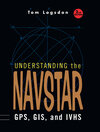
×
![Buchcover ISBN 9780442020545]()
Inhaltsverzeichnis
- 1 The Science of Navigation.
- 2 The Navstar GPS.
- 3 Performance Comparisons for Today’s Radionavigation Systems.
- 4 User-set Architecture.
- 5 User-set Performance.
- 6 Differential Navigation and Pseudo-satellites.
- 7 Interferometry Techniques.
- 8 Integrated Navigation Systems.
- 9 Interoperability with Other Navigation Systems.
- 10 The Navstar Satellites.
- 11 Precise Time Synchronization.
- 12 Digital Avionics and Air Traffic Control.
- 13 Geodetic Surveying and Satellite Positioning.
- 14 Military Applications.
- 15 Civil Applications.
- 16 Geographic Information Systems.
- 17 Intelligent Vehicle Highway Systems.
- Appendix A Additional Sources of Information.
- GPS Information Centers.
- The U. S. Coast Guard’s Information Center.
- The Computer Bulletin Board at Holloman Air Force Base.
- Global Satellite Software’s Computer Bulletin Board.
- Associated Consulting’s Bulletin Board.
- The Glonass Computer Bulletin Board.
- Precise GPS Orbit Information.
- U. S. Army Electronic Proving Ground GPS Range Instrumentation System.
- GPS Information with a European Flavor.
- The United Kingdom.
- The Netherlands.
- Norway.
- GPS Clock Behavior.
- Information for Surveyors.
- GPS World Magazine.
- The Federal Radionavigation Plan.
- Appendix B Today’s Global Family of User-set Makers.
- Domestic User-set Makers.
- Foreign User-set Makers.
- Appendix C Navigation-related Clubs and Organizations.
- Appendix D Navigation-related Magazines and Periodicals.




